An outdoor sunroom may be just what you need to avoid mosquitoes on hot summer days. These light-filled spaces give you the ability to enjoy the outdoors without actually having to go outside. Whether you want to host an event in the sun or cozy up with a book and a full view of nature, sunrooms make it possible to do so without having to worry about a sudden downpour or an unexpected gust of wind. Use this guide to find out if a sunroom and all it has to offer is what’s been missing from your abode.

Sunrooms: What Are They?
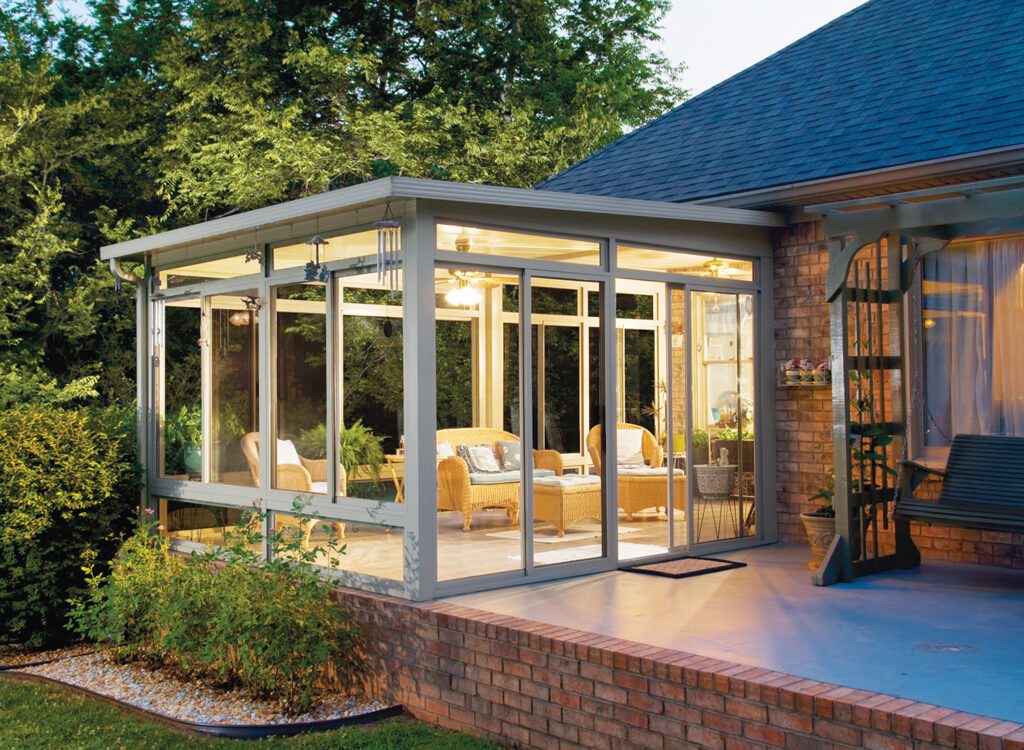
Sunrooms are extensions of a house with windows, screens, and sometimes a glass roof to create a never-ending stream of light. But not all sunrooms are equal.
If your version isn’t equipped with wiring or heat, you can only use it in certain seasons. Others are ideal for year-long use, but also cost more to build. And, of course, it’s easy to confuse a sunroom versus solarium—which, while similar, are not often built with the same materials.
Sunroom Types: What Are They?
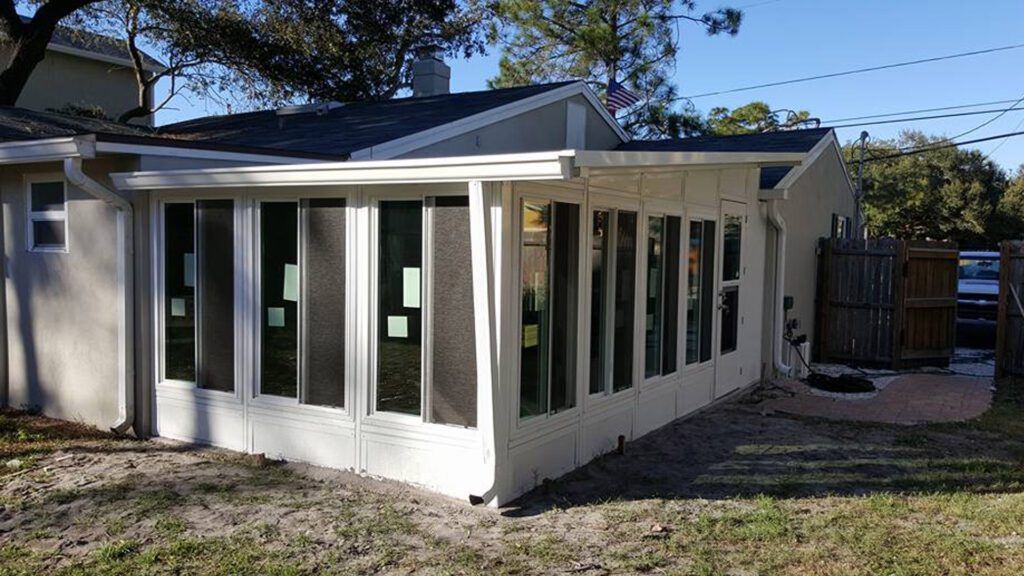
Sunrooms offer flexible indoor/outdoor space that can increase the square footage of your home and help you enjoy the sunshine throughout the year. In addition to creating a space that can be enjoyed for years to come, sunroom additions can increase the value of a home by up to half the cost of the addition.
Three-Season Sunroom
As the name suggests, a three-season sunroom is only usable for three seasons of the year unless you live in a more moderate climate. It’s physically separated from the rest of a house by a sliding glass or French door and isn’t ideal for colder months because it’s not climate-controlled. Three-season sunrooms cost $10,000 to $40,000 on average to build.
Four-Season Sunroom
Four-season sunrooms are equipped with heating and cooling capabilities and are built a little differently to accommodate these add-ons. They’re usually fitted with knee-high walls rather than floor-to-ceiling windows to allow for proper HVAC duct and wiring installation. Some may also rely on insulated windows to regulate the internal temperature.
Four-season sunrooms are generally more expensive than three-season sunrooms due to the cost of adding HVAC, differing architecture and installation, and insulated windows. Four-season sunrooms cost $25,000 to $80,000 on average.
Sun Porch
Sun porches or enclosed porches are among the most affordable sunroom options because they’re exclusively surrounded by screens rather than windows. If you’re trying to decide between a sunroom versus an enclosed porch, know that transforming your preexisting porch is a relatively easy project to do yourself.
Sun porches cost $2,000 to $2,800 on average. While a sun porch is more specific than a sunroom, you’ll find plenty of screened-in sun porch ideas to make the space your own.
Conservatory
In spite of the fact that many people use the terms sunroom and conservatory interchangeably, there is actually a difference between the two. Conservatories were originally intended to be used as greenhouses and are covered with glass ceilings to let as much light and heat in as possible. They can also get a bit stuffy in the summer for this same reason—great for plants but not so much for people.
Conservatories can range in cost a great deal depending on the size, architecture, and material choices. Conservatories cost between $5,000 and $80,000 on average.
Sunroom Advantages and Disadvantages
You can truly let your creativity run free when considering all the sunroom ideas out there. Versatility is truly one of the top reasons to consider this type of home addition. However, it’s important to know the downsides before building.
Advantages
Morning cups of coffee, long nights chatting in the summer, and endless days hanging with friends—there’s no question that adding a sunroom enhances how you use your home. Here are a few additional perks to consider:
- May increase home value by adding more square footage and indoor/outdoor space
- Offers a bug-free outdoor dining and hosting area
- Increases the amount of natural light in your home’s indoor space
- Room can double as a dining area, children’s play space, or entertainment room
- Typically cost less than the price of other home additions
Disadvantages
On the other hand, don’t be fooled by a sunroom’s seemingly simple construction. The building process can be lengthy and quite the investment. Here are some cons of building a sunroom to consider:
- On average, the cost of a sunroom ranges from $21,000–$73,000.
- Four-season sunrooms require additional insulation and HVAC access, raising the total cost.
- Three-season sunrooms are not usable for a full quarter of a year.
- The room will impede on outdoor space in your yard.
- With greater exposure to the elements, the room is more prone to changes in temperature, leaks, and storm damage.
How to Choose the Right Sunroom Style
With all the sunroom styles available, it can be difficult to determine which is the best fit for you. As you consider your options, ask yourself the following questions.
What Is My Budget?
The budget typically plays a major role in determining what sort of project homeowners choose to complete. Sun porches are generally the lowest-cost option for a sunroom, while four-season rooms (or some high-end conservatories) are the most expensive.
Building a sunroom on a budget often comes down to its size, the type of finishes you choose, and whether you opt for a prefab sunroom structure or a custom-built design.
How Do I Plan to Use the Space?
It’s important to consider how you plan to use the space before you decide what style of sunroom is for you. If you plan to use the space year-round as an extra office space, playroom, or dining room, a four-seasons room is likely ideal.
If you plan to use the space for entertaining or as a true bonus room and are comfortable using it less during the cooler months, a three-seasons room is likely a good option. If you’ll use the space for gardening, a conservatory is your best option.
What Style Matches Your Existing Home Design?
If you’re adding a sunroom onto your home, you’ll likely want to think about what style matches well with your existing home design. A lower-cost sun porch likely won’t look natural when added to a high-end custom home, while a conservatory won’t make visual sense in a new-build neighborhood with limited backyard privacy.
What Is the Climate Like?
The climate of your area will likely play a part in your decision of what style of sunroom is for you. If you live in an area with a long winter, you’ll likely want a four-season room, since you won’t be able to use a sun porch or three-seasons room for long stretches. If you live in a particularly hot or humid climate, a conservatory might get quite uncomfortable during the summer months.
Custom Sunroom Features
In addition to being available in a range of styles, you can customize sunrooms to add a variety of features that tailor the space to your exact taste and needs.
Fireplaces
Adding a fireplace to your sunroom build can help the space feel cozy and comfortable all year long. A wood-burning fireplace will work to heat your room during the winter months as well as provide ambiance when the view outside is gray or dreary. Gas fireplaces don’t usually produce as much heat but are often sleek and ideal for smaller spaces.
Wet Bar
A wet bar can elevate your sunroom and make entertaining easy. It takes up minimal square footage and has the power to add style and class to your space, as well as make it easier to serve guests (or enjoy the space yourself) without ever stepping foot outside of your sunroom.
Privacy Shades
Privacy shades can be helpful on particularly sunny days when you want to keep the sun out of your eyes or if you live in a more populated area and want to shade yourself from your neighbors’ view. Privacy shades vary in style and price point, from custom full panel curtains to automatic smart shades you can set to raise and lower at different points during the day.
-
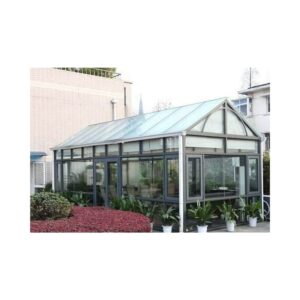 Customized Garden Glass Houses garden sunroom aluminum sun room
Customized Garden Glass Houses garden sunroom aluminum sun room -
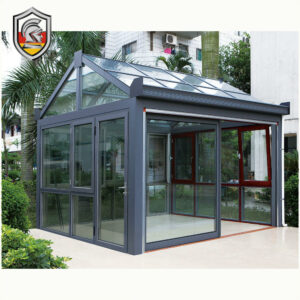 Prefabricated Aluminum Glass House Veranda Sunroom and Winter Garden
Prefabricated Aluminum Glass House Veranda Sunroom and Winter Garden -
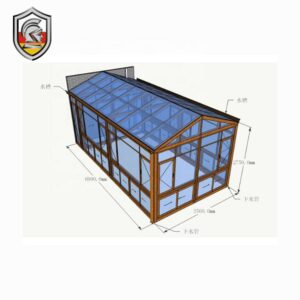 Waterproof Aluminum Alloy Small Glass Sunrooms
Waterproof Aluminum Alloy Small Glass Sunrooms -
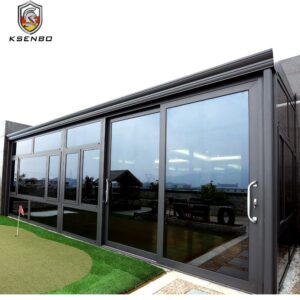 Waterproof aluminum sunroom hotel outdoor glass houses sunroom house
Waterproof aluminum sunroom hotel outdoor glass houses sunroom house -
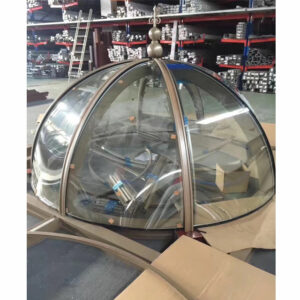 Sunroom roof panels prices igloo glass house
Sunroom roof panels prices igloo glass house -
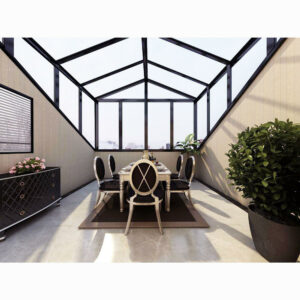 Prefabricated aluminum glass house with various choice and good performance
Prefabricated aluminum glass house with various choice and good performance -
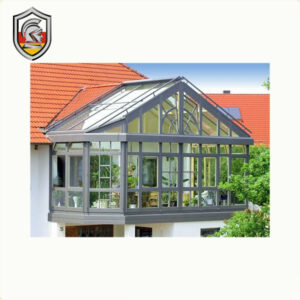 Tempered glass and aluminium frame sunrooms with Australia standard
Tempered glass and aluminium frame sunrooms with Australia standard -
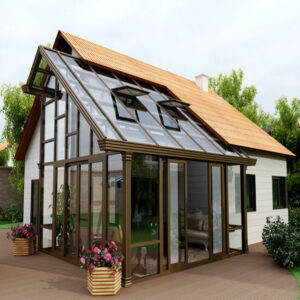 Modular Prefab Four Season Solarium Hollow Sun House doors and windows for aluminum profile Glass Sunrooms
Modular Prefab Four Season Solarium Hollow Sun House doors and windows for aluminum profile Glass Sunrooms -
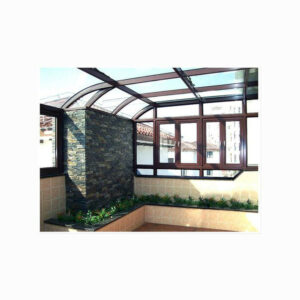 Luxury tempered insulated glass green house aluminum sun room
Luxury tempered insulated glass green house aluminum sun room